
There are moments in time when the very ground beneath our feet reminds us of the planet’s astonishing, raw power, and one such moment recently unfolded in Russia’s remote Far East. A truly monumental event has captured the attention of scientists and observers worldwide: the Krasheninnikov volcano, a geological titan nestled within the Kamchatka Peninsula, has burst into life for the first time in centuries, sending a towering plume of ash miles into the sky in a breathtaking display of Earth’s dynamic forces.
Imagine the scene as the dawn broke over the rugged, untamed landscapes of Kamchatka on a recent Sunday. Around 6 A.M. local time, or 2 P.M. EDT on August 2, personnel from the Kronotsky Nature Reserve, where this magnificent volcano resides, were treated to an unforgettable spectacle. They spotted gas and vapor spewing from its crater, a prelude to the astonishing eruption that would follow. Images released by state media painted a vivid picture of dense clouds of ash, a massive presence, majestically rising above the volcano.
The sheer scale of this awakening is difficult to overstate. The Krasheninnikov volcano hurled ash an astounding 6 kilometers, or approximately 3.7 miles, into the atmosphere. Other accounts estimated this towering plume to reach nearly four miles or even 6,000 meters high, creating an imposing presence against the vast Kamchatkan sky. It’s a testament to the immense pressures and energies that have been building deep within the Earth’s crust for so long.
While this eruption is a spectacular natural phenomenon, its remote location ensures it poses little direct threat to human life. Staff members from the nature reserve were swiftly and safely evacuated from the immediate vicinity. Kamchatka’s emergencies ministry, ever vigilant, quickly confirmed that the plume was spreading eastward from the volcano, harmlessly drifting toward the Pacific Ocean. Crucially, they noted with relief on Telegram during the eruption, “There are no populated areas along its path, and no ashfall has been recorded in inhabited localities.”
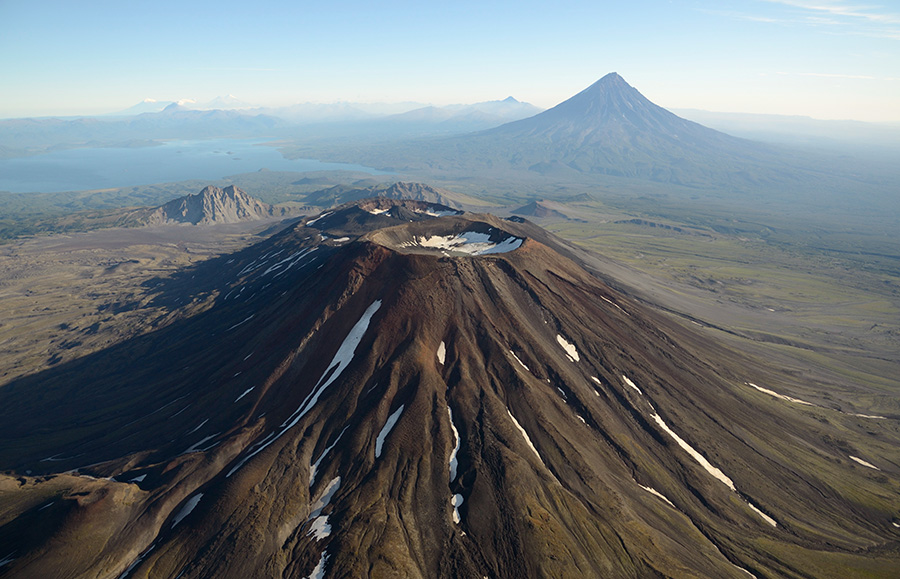
Despite the minimal direct danger to communities, such a significant event does not go unnoticed in the skies. The ministry was quick to assign the Krasheninnikov volcano an “orange” aviation hazard code, a standard procedure signaling that flights in the area might experience disruptions. This proactive measure ensures the safety of air travel, acknowledging the powerful and far-reaching effects of volcanic ash on aircraft.
One of the most fascinating aspects of this eruption is its sheer rarity. The Kamchatka Volcanic Eruption Response Team, a local body diligently monitoring and reacting to such events, stated that this is “the first historically confirmed eruption of the Krasheninnikov volcano in 600 years,” a detail shared by Olga Girina, the team’s head, with Russian state news agency RIA Novosti. Yet, the Smithsonian Institution’s Global Volcanism Program, a respected authority based in the U.S., lists Krasheninnikov’s most recent known eruption as occurring 475 years ago, specifically in 1550. The reason for this intriguing discrepancy remains unclear, adding a touch of geological mystery to the event.
This dramatic volcanic awakening is not an isolated incident but rather a remarkable chapter in a recent series of seismic events that have profoundly shaken the Kamchatka Peninsula. Just days before Krasheninnikov’s eruption, early on Wednesday, the region was rocked by a colossal 8.8-magnitude earthquake, one of the strongest temblors ever recorded. This immense quake, centered less than 150 miles from the volcano, was powerful enough to trigger small tsunami waves across the Pacific, prompting warnings as far afield as Japan, Alaska, Hawaii, North and Central America, and even Pacific islands extending south toward New Zealand, French Polynesia, and Chile.
While the widespread tsunami warnings led to evacuations of millions from coastal areas, serious injuries or widespread damage were not reported, a relief to all. However, Russia did experience some localized impact, with officials reporting that a tsunami crashed through the port of Severo-Kurilsk, submerging a fishing plant. It’s a stark reminder of the immense forces unleashed when our planet stirs.
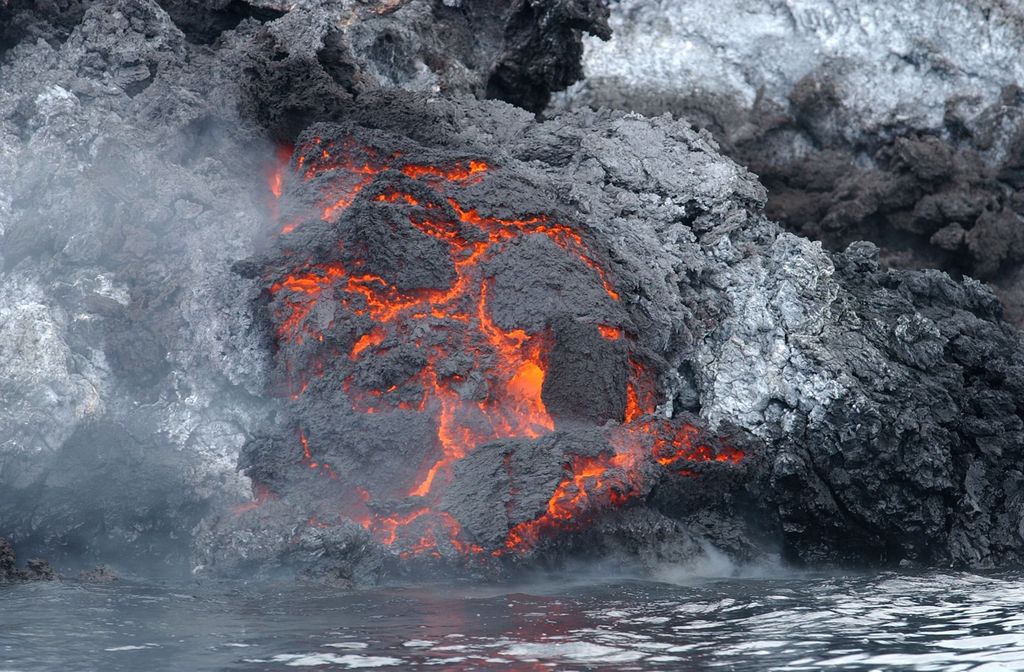
The connection between such powerful earthquakes and volcanic eruptions is a topic of intense scientific interest. According to the U.S. Geological Survey, large earthquakes can indeed trigger nearby volcanic eruptions, but only under very specific circumstances. The volcano must already be nearing an eruption, with a sufficient amount of magma stored inside it and under adequately high pressure. It appears Krasheninnikov, slumbering for centuries, was poised for its dramatic emergence.
Adding to the region’s geological ballet, the Krasheninnikov eruption was accompanied by yet another significant seismic event: a 7.0-magnitude earthquake that struck the nearby and sparsely populated Kuril Islands on that same Sunday. This quake also initially prompted a tsunami warning for three areas of Kamchatka, though it was later lifted by Russia’s Ministry for Emergency Services. Fortunately, no casualties or serious damage were reported from this additional tremor.
The Kamchatka Peninsula is a veritable hotspot of geological activity, famously known as Russia’s “land of fire and ice.” It sits squarely within the “Pacific Ring of Fire,” a vast horseshoe-shaped zone renowned for its high concentration of earthquakes and volcanoes. It’s a place where the Earth’s plates are in constant, powerful motion, creating breathtaking landscapes and dramatic natural events.
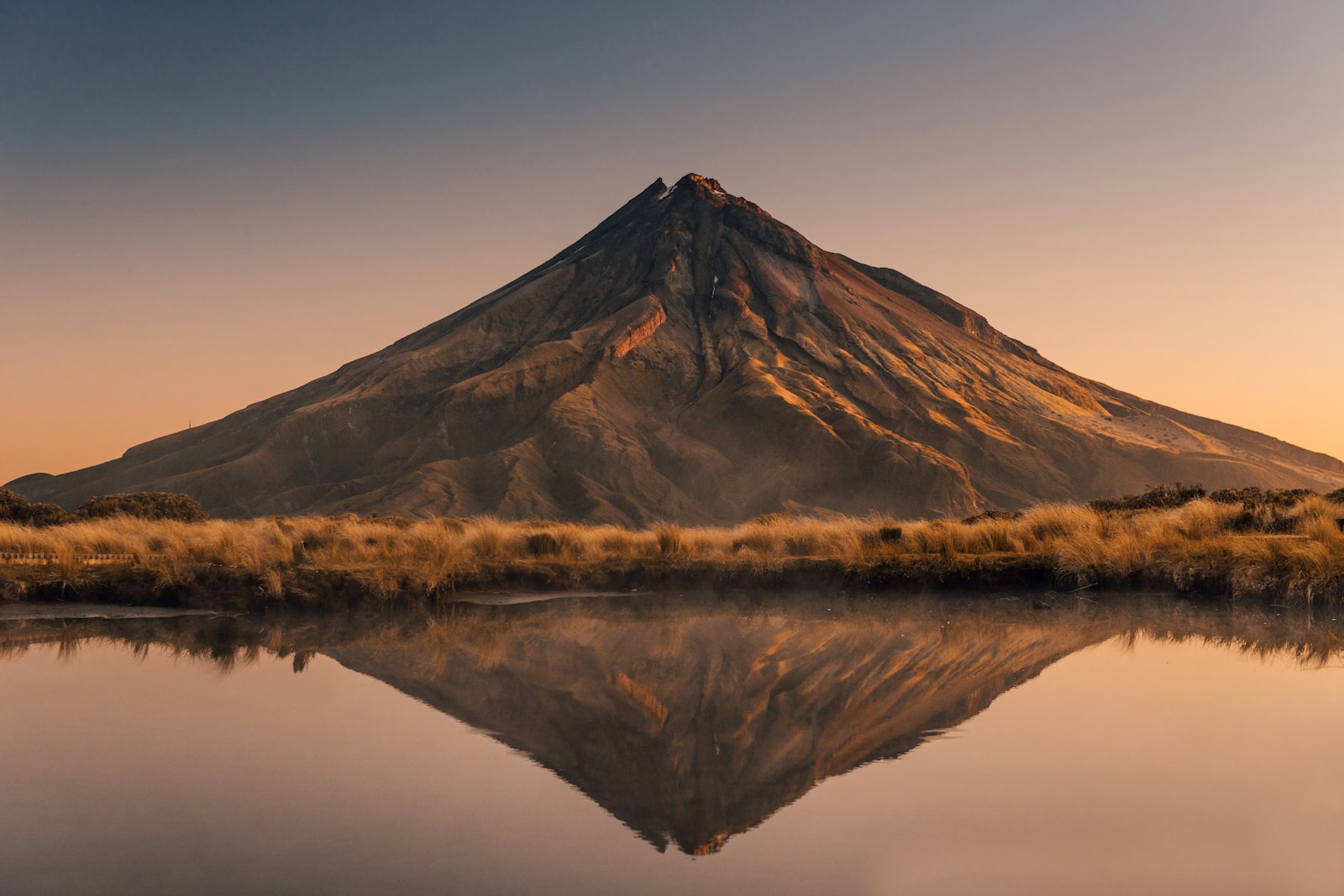
Indeed, Krasheninnikov is not the only volcano in the region to have recently commanded attention. Klyuchevskoy, another magnificent volcano in the same Eastern Kamchatka Volcanic Arc, and incidentally the highest active volcano in Europe and Asia, is also currently erupting. Scientists have been observing lava filling its crater since April, with large amounts of fresh lava confirmed as early as July 19, even before the massive 8.8-magnitude earthquake. Klyuchevskoy has a much more active history than Krasheninnikov, with more than 111 Holocene eruptions identified by scientists, including over a dozen in just the past two decades. Its consistent activity underscores the incredibly dynamic nature of this remote corner of the world.
While the eruption of Krasheninnikov is a remarkable event in its own right, to truly grasp the profound impact a major volcanic eruption can have, we need only look to historical precedents. The story of the Laki eruption, also known as the Skaftár Fires, in Iceland from June 1783 to February 1784, offers a sobering yet educational perspective. This wasn’t an enormous explosion like the more widely known Tambora or Krakatoa; instead, it was a prolonged, effusive eruption that unleashed an astounding ~14.7 cubic kilometers of basaltic lava from 140 vents along a 23-kilometer-long set of fissures and cones. To put that into perspective, Laki erupted 3.6 times more lava in just eight months than Kilauea, one of Earth’s most active volcanoes, has erupted in 30 years.
The Laki eruption was not a single, explosive event but rather a series of “surges” where vast quantities of lava, between 1 to 2.5 cubic kilometers at a time, erupted over a matter of days. These flows were incredibly swift, moving at rates of 15 to 17 kilometers per day, traveling as far as 35 kilometers down river channels in just one to two days. More than half of the total lava erupted during Laki poured out in the first 48 days, showcasing the rapid and massive release of magma. This massive outpouring was so significant that Laki is considered close to a mini flood basalt eruption, a type of volcanic event characterized by enormous volumes of lava.
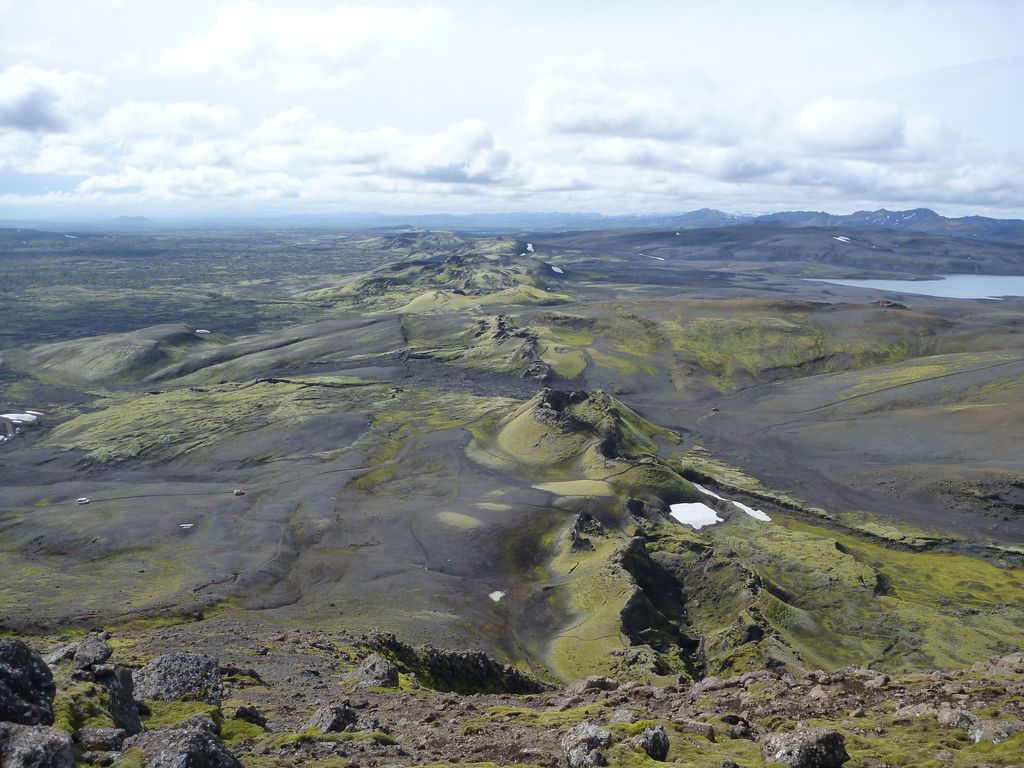
The impact of Laki on Iceland itself was nothing short of catastrophic, primarily due to the vast quantities of volcanic gases released, not just the lava flows. Sulfur dioxide, a noxious gas, remained close to the ground, creating acid rains so potent they could burn holes in leaves, kill trees and shrubs, and irritate human skin. Moreover, the eruption released an estimated 8 million metric tons of fluorine. As this fluorine settled, it was incorporated into grasses, leading to a widespread condition known as fluorinosis among grazing livestock. A staggering sixty percent of all grazing animals perished due to the effects of the Laki eruptions.
The devastating consequences extended to the human population, leading to what is tragically known as the “Haze Famine” in Iceland. Over 10,000 people, representing approximately 22% of the country’s population, succumbed to famine and disease in the aftermath of the eruption. It’s a grim reminder of how deeply interconnected human life is with the planet’s geological processes.
But Laki’s reach extended far beyond Iceland’s shores. An estimated 95 million metric tons of sulfur dioxide made it to the upper troposphere and lower stratosphere, where it entered the jet stream and circulated across the entire Northern Hemisphere. This immense cloud formed 200 million metric tons of sulfuric acid aerosols. While about 90% of this sulfuric acid was removed through acid rain or fogs, a significant 10% remained aloft for over a year, causing a widespread atmospheric phenomenon. For two to three years after the eruption, northern hemisphere temperatures plummeted to 1.3ºC below normal.
The effects were felt globally. By July 1, 1783, the infamous volcanic haze had already been noticed as far away as China. In North America, while historical records are sparse, tree ring analyses from northern Alaska indicate that July and August of 1783 were remarkably cold, with the mean temperature dropping to 7.2ºC compared to a normal of 11.3ºC. Russian traders in Alaska documented a population decrease in the years following the eruption, and Inuit oral histories even refer to a “Summer that did not come,” which very likely correlates with the Laki event. The sulfuric acid aerosols also caused damage to crops in Europe, where noxious dews and frosts formed. Ash from the eruption was noted as far away as Venice, Italy, demonstrating the immense global reach of such colossal eruptions.
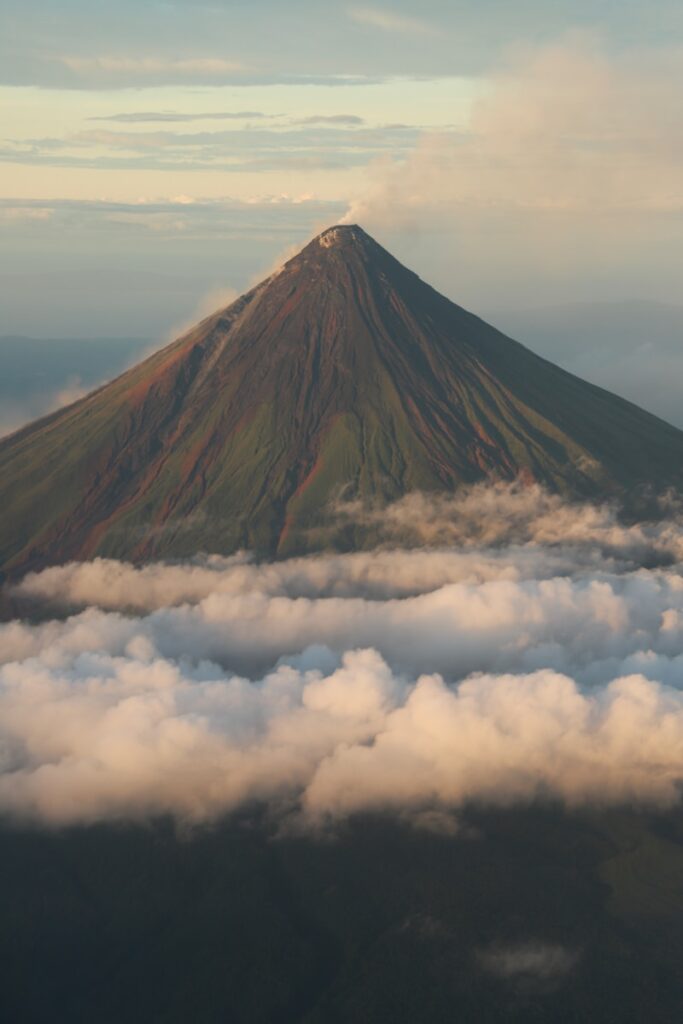
The Laki eruption serves as a powerful historical analogue, reminding us of the potential far-reaching impacts of even seemingly localized volcanic events. It underscores the critical importance of understanding and monitoring our planet’s active geology. While modern volcano monitoring techniques can offer precious warnings, sometimes months in advance, the sheer scale of such events means escaping their broader consequences can be incredibly challenging. Imagine the potential disruption to global air travel, or widespread crop failures due to acid rains, if a Laki-scale eruption were to occur today.
As the Krasheninnikov volcano’s activity begins to decrease, though with the possibility of “moderate explosive activity” continuing, we are left in awe of the Earth’s boundless energy. This recent eruption in Kamchatka is not merely a geological curiosity; it is a profound lesson in the dynamic and ever-changing nature of our world. It highlights the tireless work of scientists who meticulously track these powerful events, striving to understand them better and protect communities where possible.
Standing witness to such an event, whether directly or through scientific reports, ignites a genuine enthusiasm for the natural world. It reminds us that our planet is a living, breathing entity, full of incredible wonders and powerful forces that continue to shape its destiny and, in turn, ours. The Kamchatka Peninsula, with its newly awakened giant, stands as a vibrant testament to the Earth’s enduring power and the captivating saga of its deep geological heartbeat. What an extraordinary time to be alive and observe these magnificent natural spectacles!


